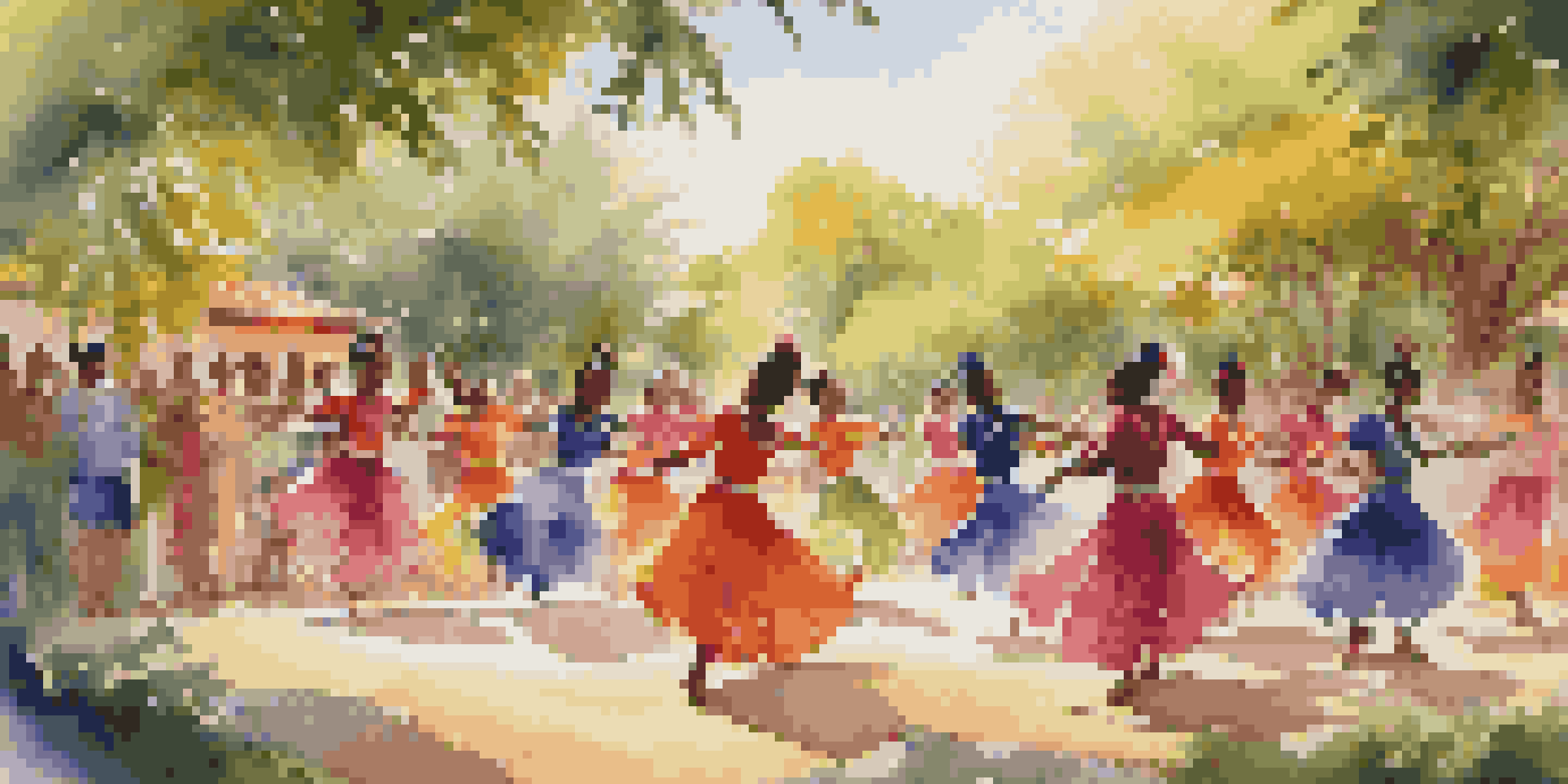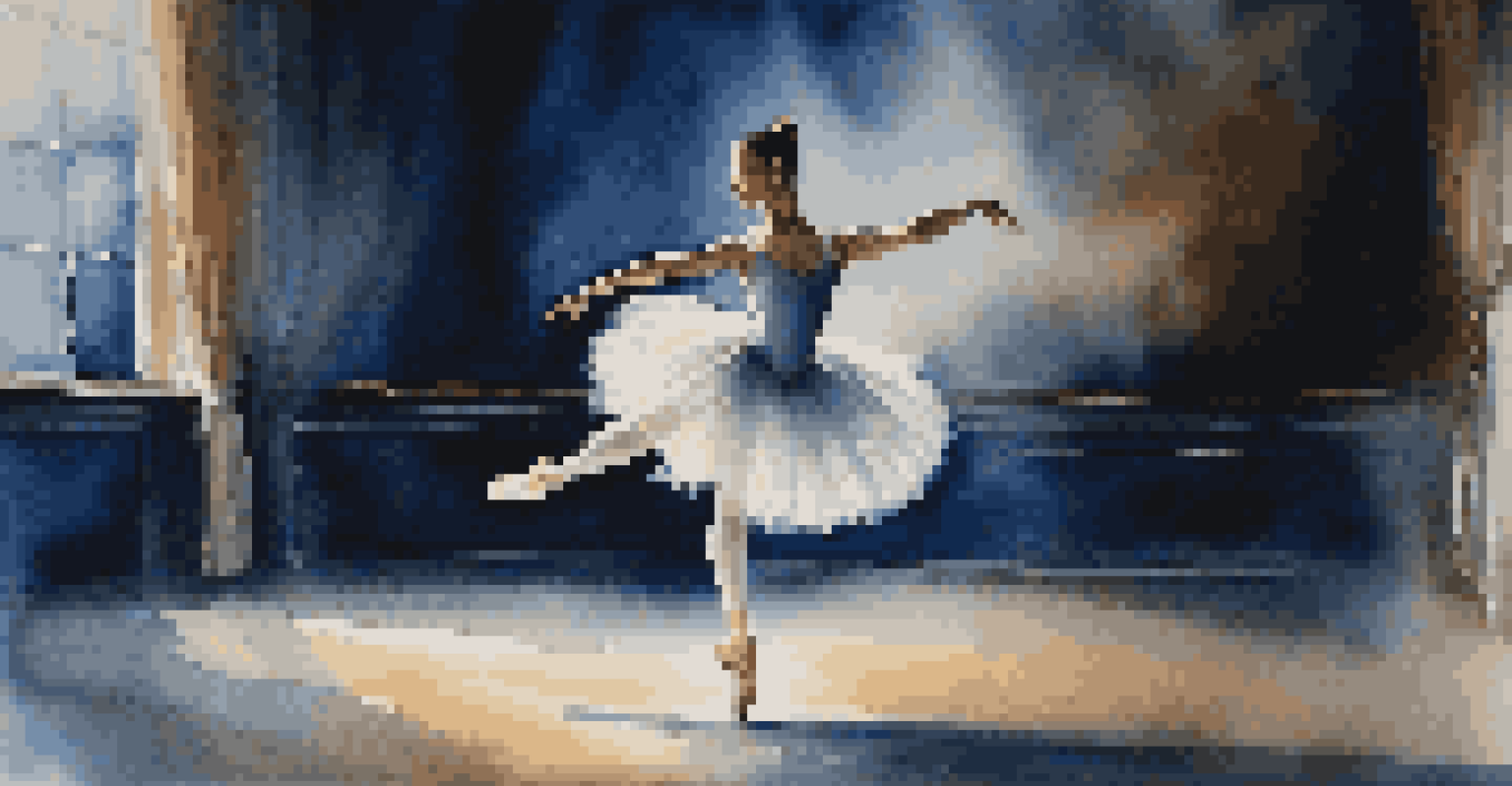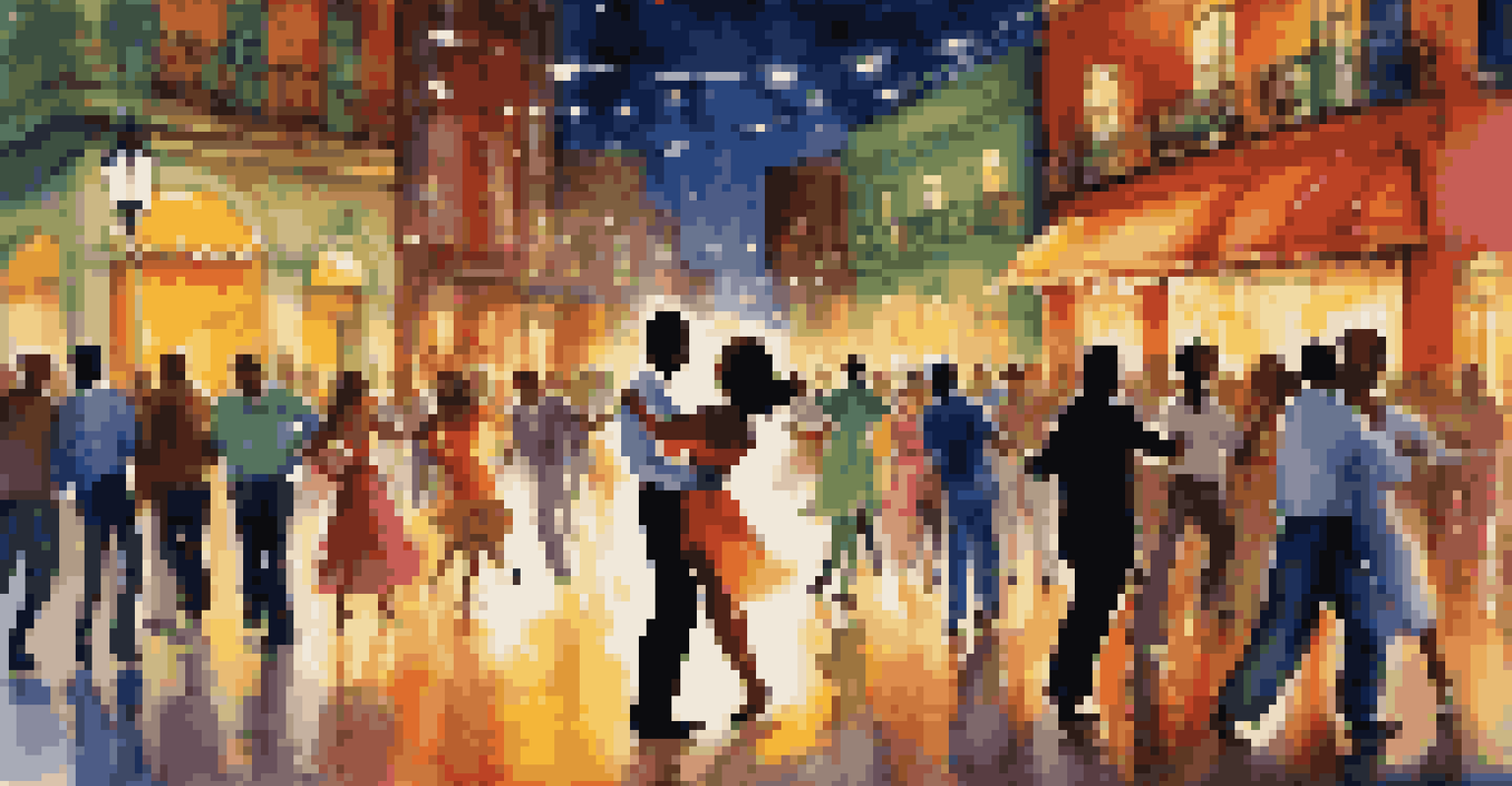The Connection Between Dance and Music: A Harmonious Relationship

Dance and Music: A Timeless Connection
Since ancient times, dance and music have been intertwined, creating a unique form of expression. Think of a traditional folk dance or a ballet; each movement is often perfectly timed to the rhythm of accompanying music. This relationship is not just coincidental; it's rooted in our very nature to move and groove to sound.
Dance is the hidden language of the soul.
When you hear a lively tune, your body instinctively wants to move. This phenomenon happens because music influences our emotions, prompting us to respond physically. Whether it’s a toe tap or a full-blown dance, this connection highlights how deeply music can resonate within us.
Moreover, many cultures celebrate this bond through rituals and festivities, where music and dance play crucial roles. These events bring communities together, showcasing the universal language of rhythm and movement, reminding us that we are all part of this harmonious connection.
The Role of Rhythm in Dance
Rhythm serves as the backbone of both dance and music, providing structure to each art form. Imagine a drummer setting the beat; dancers rely on this steady pulse to synchronize their movements. Without rhythm, dance would lose its energy and direction, making it less engaging for both the performer and the audience.

Different styles of dance correspond to various rhythms, creating a rich tapestry of movement. For instance, ballet often follows a strict tempo, while hip-hop embraces syncopated beats, allowing for more freestyle expression. This diversity showcases how rhythm shapes not only the performance but also the emotional experience of the viewer.
Dance and Music's Emotional Bond
The connection between dance and music allows for profound emotional expression, enabling audiences to feel a range of sentiments through movement.
Ultimately, rhythm ties the two art forms together, allowing dancers to interpret music in their unique ways. This synergy results in performances that are not just visually captivating but also deeply moving, as each dancer tells a story through their interpretation of the rhythm.
Emotional Expression Through Movement
Dance is often referred to as a physical language, allowing dancers to express emotions that words sometimes can't convey. When combined with music, this expression becomes even more powerful. For example, a slow, melodic piece might inspire graceful, fluid movements, while an upbeat song could lead to energetic, sharp choreography.
Music is the shorthand of emotion.
This emotional storytelling is what makes performances so captivating. Audiences can feel the joy, sadness, or excitement radiating from the dancers, creating an immersive experience. The combination of music and movement creates a multi-sensory connection that resonates on a deeper level.
Moreover, this emotional bond is not limited to professional dancers; anyone can experience it. Whether you're swaying to a favorite song in your living room or joining a dance class, the connection between music and movement allows you to express your feelings freely, fostering a sense of joy and liberation.
Cultural Influences on Dance and Music
Different cultures have their unique dance styles and musical traditions, showcasing the diverse ways in which these art forms intersect. For instance, the rhythmic beats of African drumming go hand-in-hand with traditional dances that tell stories of the community. Each culture’s music and dance reflect its history and values, creating a rich tapestry of human experience.
As globalization continues to blend these cultural expressions, new hybrid forms of dance and music emerge. Think of salsa, which combines African rhythms with Latin influences, creating a vibrant dance scene that celebrates cultural diversity. This evolution highlights how interconnected our world truly is, as artists draw inspiration from various sources.
Cultural Diversity in Art Forms
Different cultures contribute unique dance styles and musical traditions, showcasing the rich tapestry of human experience and creativity.
Celebrating these cultural connections enhances our understanding of each art form and fosters appreciation for the beauty of diversity. By exploring different styles, we not only enrich our own experiences but also honor the traditions and stories that shape global communities.
Dance as a Form of Communication
Dance transcends language barriers, allowing individuals to communicate emotions and stories without uttering a single word. When music plays, the dancer's body takes over, conveying messages that resonate with audiences on a universal level. This ability to connect through movement speaks to the core of human experience.
For example, contemporary dance often explores themes like identity, loss, and love, providing a platform for discussion and reflection. By expressing these concepts physically, dancers invite viewers to engage with their work on an emotional level, prompting introspection and dialogue.
This form of communication enriches our understanding of each other, as it encourages empathy and compassion. In a world that can often feel divided, dance serves as a reminder that we can connect through shared emotions and experiences, fostering a sense of unity and understanding.
The Science of Dance and Music
Research shows that there are strong neurological connections between dance and music. Studies have revealed that engaging in dance activates multiple areas of the brain, enhancing cognitive functions and emotional processing. This interplay demonstrates how our brains respond positively to the combination of rhythm and movement.
For instance, music can boost motivation and mood, making it easier for people to engage in physical activity. This is why dance classes often incorporate upbeat music; it promotes a fun and energetic environment where participants can thrive. Additionally, this combination can foster a sense of community and belonging among dancers, enhancing their overall experience.
Future of Dance and Music Innovation
Technological advancements are redefining the collaboration between dance and music, creating new opportunities for immersive and interactive performances.
Understanding the science behind this connection further emphasizes its importance in our lives. As we explore the benefits of dance and music, we can appreciate how they contribute to our physical health, mental well-being, and social connections, making them essential elements of a fulfilling life.
The Future of Dance and Music Collaboration
As technology advances, the relationship between dance and music continues to evolve. Innovations like virtual reality and interactive performances are pushing the boundaries of how these art forms can be experienced. Imagine participating in a dance performance through a VR headset, where you can feel the rhythm and movement as if you were right there on stage.
These advancements create exciting opportunities for collaboration among artists from various disciplines. Musicians and dancers can work together in ways that were previously unimaginable, producing performances that captivate audiences and challenge traditional norms. This fusion of creativity keeps the art forms fresh and relevant in today's fast-paced world.

Looking ahead, the possibilities for dance and music collaboration are limitless. As artists continue to explore and innovate, we can expect to see new styles and expressions emerge, ensuring that this harmonious relationship remains vital in our cultural landscape.